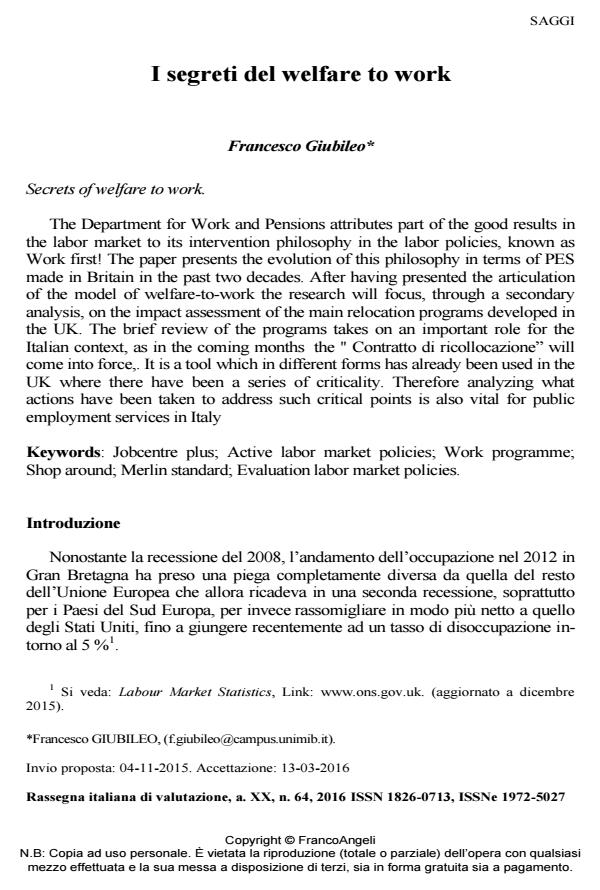I segreti del welfare to work
Titolo Rivista RIV Rassegna Italiana di Valutazione
Autori/Curatori Francesco Giubileo
Anno di pubblicazione 2017 Fascicolo 2016/64
Lingua Italiano Numero pagine 20 P. 53-72 Dimensione file 1146 KB
DOI 10.3280/RIV2016-064004
Il DOI è il codice a barre della proprietà intellettuale: per saperne di più
clicca qui
Qui sotto puoi vedere in anteprima la prima pagina di questo articolo.
Se questo articolo ti interessa, lo puoi acquistare (e scaricare in formato pdf) seguendo le facili indicazioni per acquistare il download credit. Acquista Download Credits per scaricare questo Articolo in formato PDF

FrancoAngeli è membro della Publishers International Linking Association, Inc (PILA)associazione indipendente e non profit per facilitare (attraverso i servizi tecnologici implementati da CrossRef.org) l’accesso degli studiosi ai contenuti digitali nelle pubblicazioni professionali e scientifiche
Il Department for Work and Pensions attribuisce parte dei buoni risultati nel mercato del lavoro alla propria filosofia di intervento nelle politiche del lavoro, nota come Work first! Il contributo presenta l’evoluzione di tale filosofia in tema di servizi al lavoro realizzato in Gran Bretagna negli ultimi due decenni. La ricerca dopo aver presentato l’articolazione del modello di welfare-to-work si soffermerà, attraverso un’analisi secondaria, sulla valutazione d’impatto dei principali programmi di ricollocazione realizzati nel Regno Unito. La breve rassegna sui tali programmi assume un ruolo rilevante anche per il contesto italiano, in quanto nei prossimi mesi entrerà in vigore il "Contratto di ricollocazione", uno strumento che in diverse forme è stato già realizzato in Gran Bretagna dove non sono mancate una serie di criticità. Pertanto analizzare quali azioni sono state intraprese per risolvere tali criticità rappresenta un’informazione fondamentale anche per i servizi pubblici per l’impiego italiani.
Parole chiave:Centri per l’impiego; Politiche attive del lavoro; Work Programme; Shop around; Merlin Standard; Valutazione politiche del lavoro
Francesco Giubileo, I segreti del welfare to work in "RIV Rassegna Italiana di Valutazione" 64/2016, pp 53-72, DOI: 10.3280/RIV2016-064004